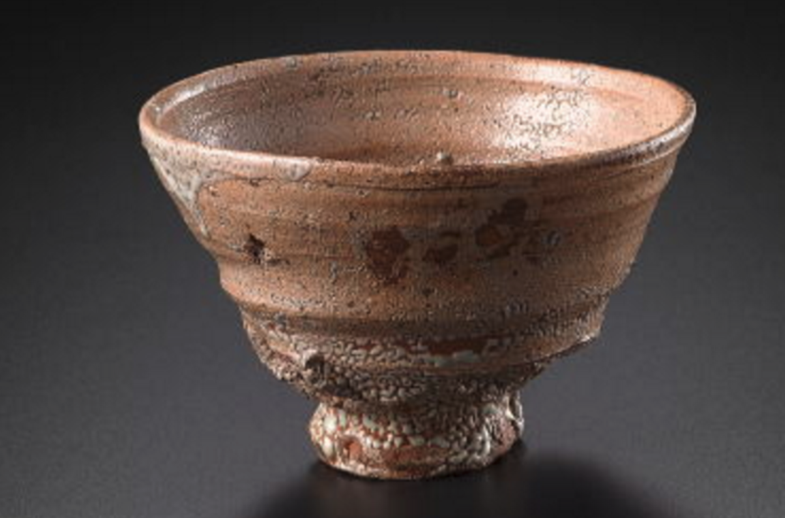Hello! In order to broaden the audience, I’m writing my posts in English too! I hope this will help more people interested in ceramics to get more information about the subject.
Chawan
Chawan is the Japanese word for tea bowl. People from the far-east traditionally drink tea not in cups but in tea bowls and since a long time ago these pieces have been an essential utensil for the tea ceremony masters and their enthusiasts. Today I will explain how, over the centuries, the taste for tea bowls has changed in Japan.
Century 15
The supremacy of the Karamono of the Ashikaga era
Tenmoku chawan is a piece covered in black glaze and shows some clay color at the foot of the piece (kōdai). The name Tenmoku (eye of the sky) comes from the Tianmu mountain in the Chinese province of Zhejiang, where Zen Buddhist monks did their practices. This place was also a destination for Japanese monks and, along with the habit of drinking tea, they also took these chawans to Japan. In the Muromachi era, even within the great appreciation for the Karamonos (Japanese name for the art objects made in China), parts of Jian kilns in Fujian Province, called Kensan (Japanese pronunciation of Jian Zhan, or Jian bowls) were considered the most valued pieces of all.

Tenmoku yōhen (Inaba Tenmoku. Cerâmica dos fornos Jian, China. Dinastia Song do Sul. Séc. XII ou XIII Museu Seikado, Japão.
Because of the chemical reactions during the firing, from the black glaze emerges several bright spots in seven colors and light blue irises, called yōhen (bright change). In the world, there are only 3 copies left and they are all in Japan. Of an astonishing beauty, almost causing fear, these ceramics attracted the attention of tea ceremony initiates. During the 16 century, after the guidance of Joo Takeno, an influential tea master and a well-known merchant during the time known as Sengoku, the austere concept of “wabi” flourished and began the taste of using chawan that originally wasn’t intended for tea drinking. Modest, these pieces were produced in the Korean peninsula. Being “beautiful” or not, it depended by different aesthetic concepts choices and these selections was transmitted to the present day by generations of tea masters. At the beginning of the Edo era, orders began to be made to the Korean peninsula and these chawans enjoyed great value by tea ceremony community.

Chawan Oido. Altura 9,1 cm, largura 15,0 cm, pé 5,5 cm. Era Joseon, Séc. XVI, Coreia, Museu Nacional de Tóquio.
Oido Chawan
Ido is a type of Kōrai chawan (Japanese word for art objects made in Korea). Within this classification, there is a particularly large object called ōido (large Ido). The loquat color of the glaze, the large shape, the bamboo knot-shaped base (take-no-fushi) are special features. Kannyu (cracks in the glaze) and Kairagi (glaze wrinkling in the circumference of the base) cause pleasure as keshiki (in Japanese literally meaning landscape, it is the unique individual characteristics of the ceramic piece such as the influence of the flames in the kiln, the way the glaze has run in the piece, etc.).
The story continues next week! See you!!!




Gustavo, can you provide me with an email address so that I can send you pictures of the tea bowl I acquired from my Japanese uncle. I was told it was an Edo period piece but I would love to authenticate its origin, or at least learn more. My research shows it has many features of a Joseon period Ido bowl. It has an Oido shape, 14.28 cm diameter, Kairagi base and Kannyu cracks in the glaze. The unglazed portion of the bowl are not dots but a ring, and there are finger marks from the potter, thumb inside and three fingers on the outside. It came in a wooden box with a label.
Kind regards,
Jimmy on Cape Cod
My e-mail can be found in contact (contatos) section on this website.